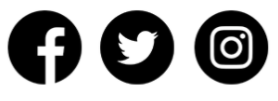Brand guidelines play an important part in your Design System as they help you to define how your brand will be portrayed in your campaigns.
Keeping the brand consistency throughout customer facing media is as important as sending the same message across different communication channels. For example, even though email and website designs have their own limitations, they should be as similar to each other as possible.
When your subscribers open your emails you want them to immediately recognise your brand. From your choice of colours to the type of imagery you use, everything in your email can contribute to making your brand as recognisable and memorable as possible.
Colour is a crucial part of your brand identity, therefore you might want to consider using the same or similar colours for your emails, to the ones used across all of your other channels.
Other things you may need to consider:
Fonts are also an important element to consider. You may have your own font specific to your brand or use a certain typography for your emails.
You may also need to think about:
You can read more on other web safe fonts here and you are able to find many web fonts here.
Consider how much padding you are going to add in between modules. Adding space will not only make the content easily readable but will also make your email more accessible. Spacing, such as margins and paddings, between elements help create a seamless flow of content without making the message look cluttered.
You may want to consider things like:
Including images in an email is a powerful tactic. Think about:
Similar to fonts, the design of the social media icons should ideally be the same as the ones that you have on other platforms. With your logo, if you have multiple designs you'll need to decide which ones are to be included in your brand guidelines. Equally, if you only have one version, you may want to consider designing another logo with a contrasting colour scheme.
When building your Email Design System, you'll find some elements such as your brand logo, category images and social media icons may always stay the same and therefore won't need to be swapped out when creating emails. With these, try hardcoding those images into your Email Design System which means they will always appear by default whenever you create a new mailing in Taxi. You can also take a step further and lock them down so no one will be able to edit or remove them.
With new advances in technology, such as dark mode, email marketing teams are often exposed to new challenges. In order to ensure your emails adapt to recipients using dark mode, you may want to consider using transparent pngs and adding a white outline around elements in your Email Design System. You will want to think about designing your default images for dark mode, such as social icons, logo, link colours etc and how they're going to contrast with the dark background.
Here are examples of some icons in light mode with added white outline:

Here are the same icons in the dark mode, as you can see by adding a white outline, you are still able to see them correctly:

Here are two examples of the icons without the outline:

For more information on dark mode, and how it affects your email, you can read more here.
Regardless of how many of your subscribers open your emails on mobile devices, your Email Design System should be mobile responsive.
Think how all of the elements chosen are going to look on mobile:
Having an alternative text is important for the accessibility of your emails and supporting images that don't load. By having alt text you are still able to get the message of the image across and enable screen readers to give a seamless experience to recipients using them.
You may want to think about setting some rules within your Email Design System to ensure elements are used correctly when emails are built. For example, are there elements that can't be used next to each other? Or is there specific spacing needed below certain elements?
Here are things to consider:
According to WHO, by October 2018 there were 1.3 billion people across the globe living with a visual impairment. That means a big chunk of your subscribers may be currently struggling with accessing your emails.
Here are the things you need to consider implementing:
Next: Once your brand guidelines is ready, start the advanced design of your Email Design System